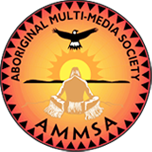Article Origin
Volume
Issue
Year
Page 2
A small band of workers on the Bushe River reserve got quite a surprise last summer when they unearthed a huge bone which once belonged to a now-extinct type of buffalo.
Dene Tha band manager Fred Didzena says the workers uncovered the bones with a backhoe used to build a road through the small reserve east of High Level.
Archeologists from Alberta Culture and Multiculturalism were contacted and soon managed to uncover the large skeleton of a young bison, ancestor to our modern wood bison which now inhabits the Wood Buffalo National Park area.
Archeologist Milt Wright inspected the bones and then analyzed them using a system called carbon-14 which detects the exact age of artefacts. These particular bones were found to be 10,000 years old.
"These are now extinct buffalo and we think that the animal was drowned when it fell through the ice of an ancient lake. The body was still intact so no predator had killed it," explains Wright in an interview from his Edmonton office.
The age of the bison makes the discovery of national significance, says Wright. It will provide lots of clues to questions to the ancient history of the area, as well as assisting historians pinpoint the exact time humans moved into the area.
"What is also very interesting is that this animal stood about two metres (six feet six inches) tall, yet it was only four or six years old," says Wright. "It is clear that this was a large animal, larger than any living bison today, and it was not even full grown."
Based on other evidence, geologists have learned the Peace River valley and lowlands areas were once parts of an immense glacial lake which formed during the retreat and melting of the glacial ice masses.
Most of what is modern Canada was engulfed in vast sheets of ice often two miles thick, and when the ice melted lakes were formed. Most of these lakes now dried up including the lake that this bison drowned in 10,000 years ago.
There is no evidence of man at the early bison site so far, says Wright, but more research and excavation may help uncover evidence of exactly when Native people came to the continent using the land bridge believed to have been part of the Bering Sea which linked North America and Asia.
Wright hopes to uncover more bones this summer if the chief and council allow him to return and excavate the area this summer.
"We have made a formal request to chief and council but we have not had a decision yet."
Didzena says the chief and council will make a decision on further excavation within the next few weeks.
- 1607 views
